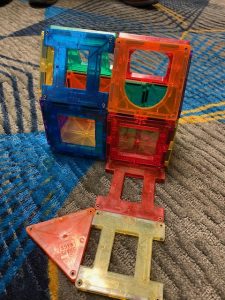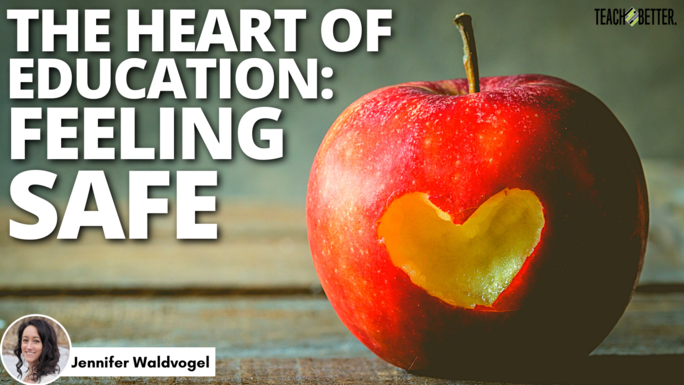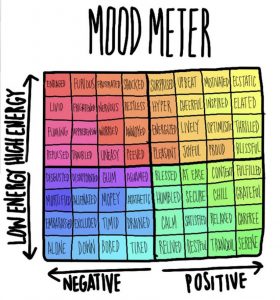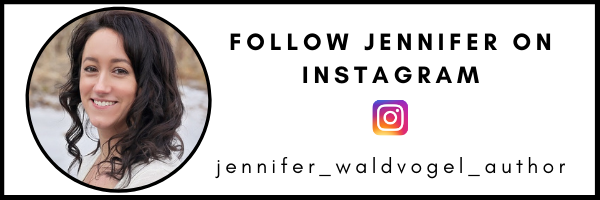TL;DR
- Emotional safety is just as critical as physical safety.
- Creating safe spaces in our classrooms starts with understanding our own safety needs.
- Build hands-on tasks with students and colleagues to break down complex emotional ideas.
- Using mood meters provides learners with a language to describe their emotions.
Feeling safe is a fundamental need. Learners’ attention in our classes depends on their sense of security. We spend a lot of time thinking about physical safety in schools, but emotional safety is just as critical. We can lead emotionally safe classrooms by embracing vulnerability as a strength. Safety and vulnerability may seem like opposite ideas because in sharing ourselves, we take a risk that someone could take advantage of our candor. But in the words of researcher Brene Brown, “When [we] shut down vulnerability, [we] shut down opportunity.” Classrooms that honor emotional safety include needed conversations about complicated social issues and values-driven topics. Safety can be found in the space between conversations. We find it in the moments of reflection our students take after considering the thoughts and feelings of their peers.
How can we launch this sense of safety with our students and colleagues? We start by asking ourselves, “What makes me feel safe?”
Designing Safe Spaces
In my first year as a high school English teacher, I spent a LOT of time decorating my classroom. Coffee pot, throw pillows, lamps of all sizes: I wanted the room to feel warm and inviting. But the part of my room I felt most proud of had nothing to do with decor. The Wall of Numbers was a giant bulletin board with large-lettered phone numbers for Alanon, Alateen, Suicide Prevention, women’s shelters, and our local counseling center. The year was 2003, well before smartphones and Chromebooks. Well before students had easy access to privately look up the information they needed in a crisis. More than anything, I wanted my students to know how to advocate. What could be more important than their emotional and physical safety?
Once we know what makes us feel safe, how can we lead this reflection with students and colleagues?
Classrooms that honor emotional safety include needed conversations about complicated social issues and values-driven topics. - Jennifer W. Click To Tweet
Educators build their version of “home” in an IETC workshop.
The Safety Zone
Whether or not we feel safe has a huge effect on our ability to learn, so let’s help students talk openly about what safe spaces include. In an activity I call The Safety Zone, small groups answer the question, “What does safe look like?” and then use magnetic tiles to create a 3D model of their definition. The playful nature of bringing toys into the classroom, especially with older learners, invites a feeling of familiarity and relaxation for a task involving emotional intelligence. Watching both teenage and adult learner groups build, I’ve seen many variations of the model. The ways learners work together to design their model differs too. This task allows learners to explore a tricky topic in a non-threatening way. It also gives us valuable information about group dynamics for future grouping.
After our task, we debrief as a whole group.
When I run this task with colleagues, we talk both about our own revelations and how we could use them in our classrooms. With students, the focus becomes about more than just our manifestations of a safe space. We can also talk about collaboration. “What role did you take in the group? How do your definitions of safety compare with your peers?” When we identify the emotions we share and recognize the differences in how we feel safe, we can better support one another.
[scroll down to keep reading]Setting Patterns of Advocacy
Asking learners to identify and describe their emotions is a powerful way to help them advocate. Even as adults, we struggle to articulate our days. How often do we say our day is “fine”? Offering accurate emotions to our students (in modeling) and to our colleagues (in connection) sets the tone for how we wish to be treated. To help learners find the words for their emotions, hand out copies of the Mood Meter and create a daily habit of checking in.
Taking the Time for Heart
When we take the time to focus on learners’ emotional needs first, we set the tone for a learning environment of care. As Aristotle once said, “Educating the mind without educating the heart is no education at all.”
About Jennifer Waldvogel
Jennifer Waldvogel fell in love with teaching because she’s an optimist at heart and believes the possibilities inside classrooms are endless. She currently serves as a Teacher on Special Assignment for Technology Integration in Yorkville District 115, working alongside students, teachers, school & district leaders to guide blended programming, design professional development, and coach personalized instruction.
Jen is a National Board Certified teacher who spent over a decade teaching writing and literature to high schoolers. After a transformative blended learning pilot, she shifted into the role of TOSA to support student success at a global level in Yorkville’s Teaching & Learning Department. Ever curious, Jen enjoys PD- if she had the time and money, she’d be in school forever- engaging in conferences and workshops, where she has presented at the local, state, and national level about learning pathways, personalized PD, mindfulness, blended learning, student motivation, and ways to maximize your LMS. She is honored to have been awarded the 2019 Illinois Computing Educator of the Year.
Jen holds a Bachelor’s from the University of Illinois (Psychology), Secondary Ed from North Central College (Language Arts), and Master’s from Northern Illinois University (School Counseling). Publications include Midwest Poetry Review, The Storyteller Magazine, Educational Leadership (2019), and Ideas to Connect Your Classroom (2020). Jen is also a published novelist, Untouchable (2016), who blogs at jenniferwaldvogel.com.
Jen is a proud wife and mom, enjoying hiking, travel, and foodie adventures with her family. She loves Walt Whitman, Key West, and music you can dance to. Writing is her favorite hobby. You can find her on FB and Instagram @jennifer_waldvogel_author.






